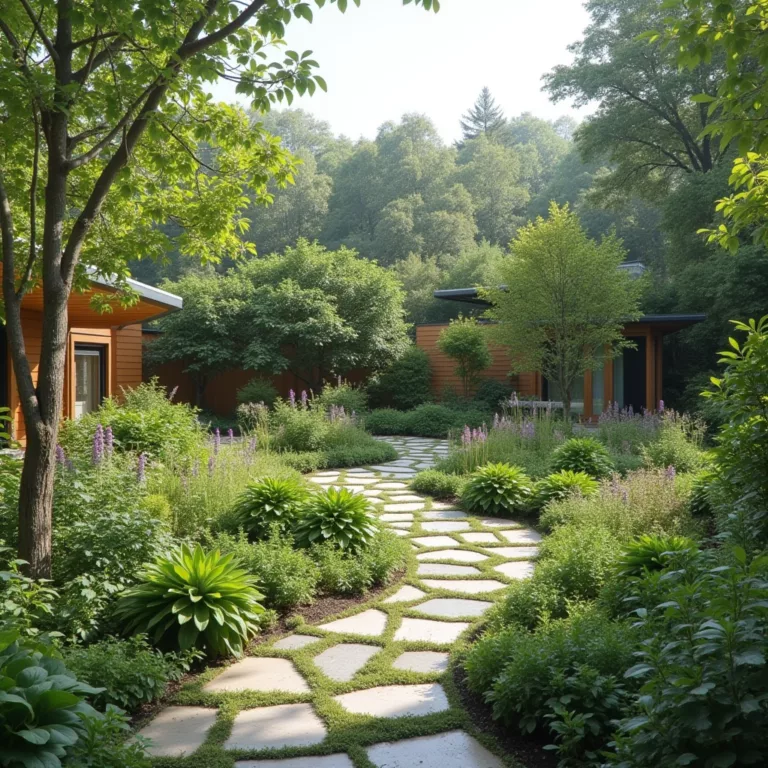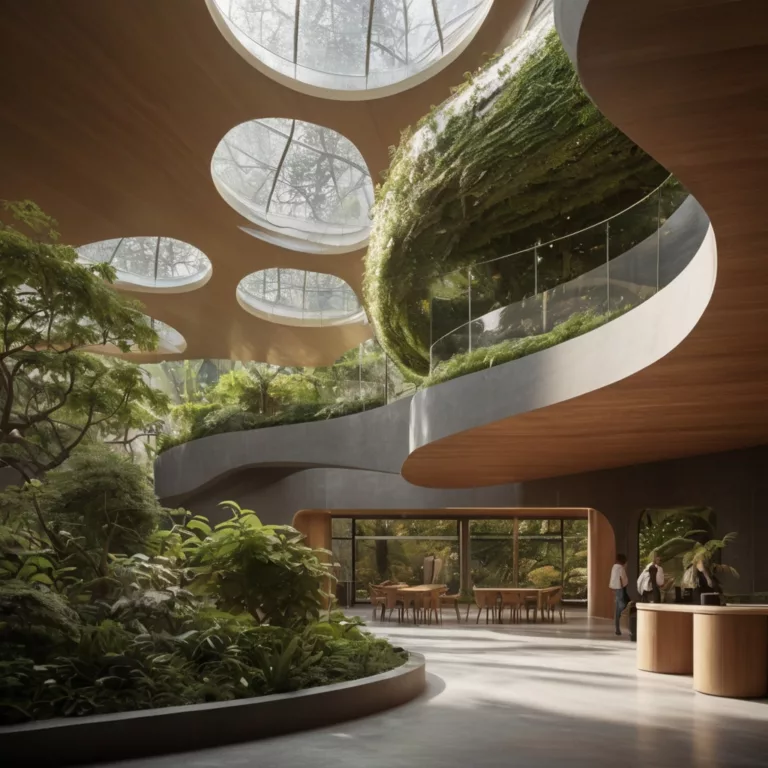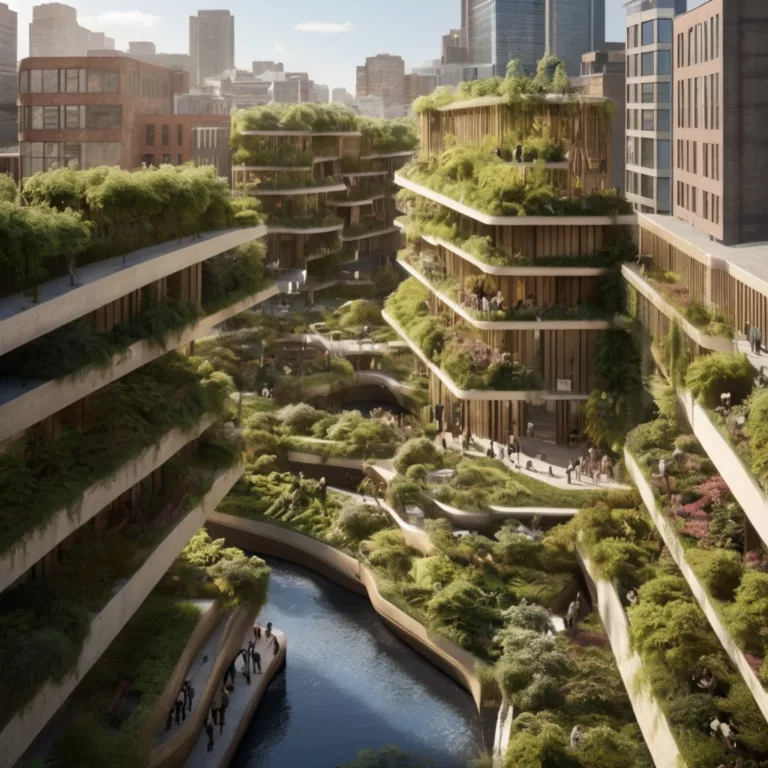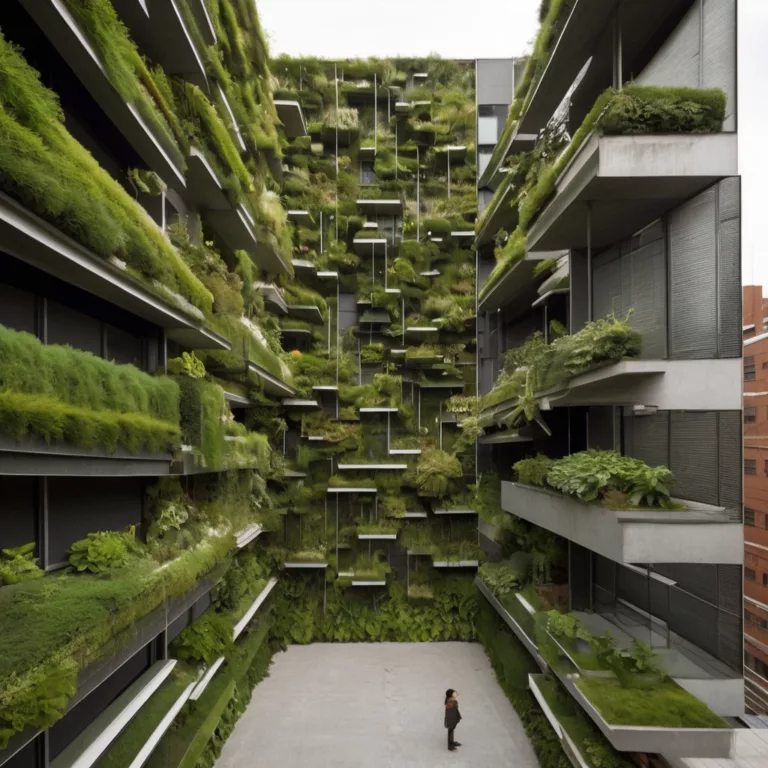Regenerative Garden Ecosystems: Cultivating Life, Restoring Earth
The Urgent Shift from Sustainability to Regeneration
In an era of climate collapse and biodiversity loss, sustainability is no longer enough. Regenerative garden ecosystems offer a radical alternative: landscapes that heal the Earth while nourishing communities. Unlike sustainable practices that aim to “do no harm,” regenerative systems actively restore soil, sequester carbon, and revive biodiversity. where every plant, insect, and microbe collaborates to rebuild our planet’s life-support systems. For eco-warriors, designers, and gardeners alike, this is your blueprint for growing hope.
Part 1: The Philosophy of Regeneration
1.1 Beyond Sustainability – A New Paradigm
- Sustainability’s Limits: Maintaining the status quo as ecosystems collapse.
- Regeneration Defined: Systems that improve soil health, biodiversity, and ecosystem services over time.
- Core Ethos: “Leave it better than you found it” – Indigenous wisdom meets modern science.
1.2 The Five Pillars of Regenerative Gardens
- Soil Revitalization: Building carbon-rich, living soil.
- Biodiversity Amplification: Creating habitats for 10x more species.
- Water Wisdom: Mimicking natural hydrological cycles.
- Energy Synergy: Harnessing sunlight, wind, and waste as resources.
- Community Integration: Gardens as social and ecological hubs.
Part 2: The Science of Self-Sustaining Ecosystems
2.1 Soil: The Beating Heart
- Compost Alchemy: Hot composting, vermicomposting, and bokashi to create humus.
- No-Till Philosophy: Preserving fungal networks (mycorrhizae) that sequester 70% of soil carbon.
- Biochar Integration: Ancient Amazonian terra preta techniques for 500-year carbon storage.
2.2 Biodiversity: Nature’s Insurance Policy
- Plant Guilds: Stack fruit trees, nitrogen fixers, pest-repellent herbs, and groundcovers.
- Apple Guild Example: Comfrey (mineral miner), chives (aphid deterrent), clover (nitrogen fixer).
- Wildlife Corridors: Connect habitats with native hedgerows, insect hotels, and bird baths.
- Genetic Diversity: Grow 20+ heirloom tomato varieties, not monocrops.
2.3 Water as a Living System
- Rainwater Harvesting: 1,000-gallon cisterns + swales for passive irrigation.
- Constructed Wetlands: Mimic natural marshes to filter greywater with cattails and willows.
- Fog Harvesting: Mesh nets in arid climates (e.g., Chile’s Atacama) yield 10L/day.
Part 3: Designing Holistic Regenerative Landscapes
3.1 Permaculture Principles in Action
- Zones and Sectors:
- Zone 0: Home → Solar dehydrators, rainwater collection.
- Zone 5: Wild edges → Unmanaged habitat for foxes, owls.
- Edge Effect Maximization: Curved paths and spiral gardens to boost species interaction.
3.2 Agroforestry & Food Forests
- Canopy Layers:
- Tall Trees: Nut oaks, black locust (nitrogen fixer).
- Understory: Pawpaw, elderberry.
- Shrubs: Currant, hazelnut.
- Herbs: Nettles, mint.
- Roots: Sunchokes, turmeric.
- Vines: Hardy kiwi, hops.
- Silvopasture Integration: Rotate chickens to fertilize, ducks for pest control.
3.3 Microclimate Engineering
- Hugelkultur Beds: Rotting wood cores retain moisture, generate heat.
- Windbreak Forests: Reduce evaporation with willow walls.
- Stone Mulch: Volcanic rock radiates heat for Mediterranean herbs in cold climates.
Part 4: Biodiversity in Practice
4.1 Rewilding Strategies
- Keystone Species: Plant milkweed for monarchs, oak for 500+ insect species.
- Pest Redundancy: Attract 15+ predator species (ladybugs, lacewings, birds) to avoid infestations.
- Seed Bombs: Guerrilla-restore degraded land with native wildflower mixes.
4.2 Soil Food Web Activation
- Microbe Brews: Aerated compost tea inoculates soil with 4 billion CFUs/gallon.
- Fungal Partnerships: Inoculate tree roots with truffle spores for mutual benefit.
- Bioindicators: Earthworms = healthy soil; lichens = clean air.
4.3 Animal Integration
- Bees: Top-bar hives + pollinator meadows.
- Bats: Install houses to control 1,000+ mosquitoes/night.
- Amphibians: Build vernal pools for frogs that eat slugs.
Part 5: Water and Energy Systems
5.1 Regenerative Hydroponics
- Aquaponics: Tilapia waste → lettuce nutrients → filtered water → fish.
- Vertical Wetlands: Green walls clean air and greywater simultaneously.
5.2 Renewable Energy Synergy
- Solar-Powered Pumps: Drip irrigation runs on PV panels.
- Biogas Digesters: Turn garden waste into cooking fuel.
- Humanure Systems: Compost toilets close the nutrient loop (when legal).
Part 6: Case Studies – Global Pioneers
6.1 Singing Frogs Farm (California, USA)
- No-Till, No-Tractor: 3-4 crop rotations/year yield 10x average, 3x profit.
- Carbon Impact: Sequester 52 tons of CO₂/acre/year.
6.2 Loess Plateau (China)
- Desert to Oasis: 3.5M hectares restored via terracing, agroforestry, bans on overgrazing.
- Result: Erosion cut by 90%, 2.5M people lifted from poverty.
6.3 Bec Hellouin (France)
- Market Garden Miracle: 1,000m² yields €55,000/year using permaculture.
- Techniques: Mandala gardens, micro-dams, 200+ plant species.
Part 7: Overcoming Challenges
7.1 Soil Degradation
- Remediation: Sunflowers (hyperaccumulators) remove lead; mycoremediation breaks down oil.
- Biofertilizers: Fish hydrolysate, seaweed extracts.
7.2 Pests Without Poisons
- Trap Crops: Nasturtiums lure aphids from tomatoes.
- Biocontrols: Beauveria bassiana fungi kill 97% of thrips.
7.3 Community Resistance
- Education: Workshops on seed saving, soil testing.
- Policy Advocacy: Lobby for rainwater harvesting rights, native plant subsidies.
Part 8: Future Frontiers
8.1 CRISPR-Edited Ecosystems
- Nitrogen-Fixing Corn: Reduce synthetic fertilizer dependence.
- Carbon-Guzzling Poplars: Genetically enhanced to absorb 3x CO₂.
8.2 AI-Driven Ecosystem Design
- Machine Learning Models: Predict optimal plant combinations for local climates.
- Sensor Networks: Real-time soil, air, and wildlife monitoring.
8.3 Urban Regeneration
- High-Rise Food Forests: Singapore’s 50-story “vertical villages” with rooftop rice paddies.
- Highway Caps: Boston’s Big Dig → pollinator meadows over former interstates.
Part 9: DIY Guide – Start Your Regenerative Journey
9.1 Step 1: Soil Testing & Remediation
- Test: pH, NPK, heavy metals.
- Remediate: Apply biochar, compost, and microbial inoculants.
9.2 Step 2: Plant Your Foundation
- Nitrogen Fixers: Clover, lupine, black locust.
- Dynamic Accumulators: Comfrey, dandelion, yarrow.
- Pioneer Trees: Birch, alder to prep soil for slower species.
9.3 Step 3: Water Systems
- Swales: Dig on contour to capture 10,000+ gallons in rainy seasons.
- Ollas: Bury clay pots for slow irrigation.
9.4 Step 4: Biodiversity Boost
- Seed Bombs: Native wildflowers + clay + compost.
- Logs & Stones: Create lizard basking spots, beetle habitats.
9.5 Step 5: Community Engagement
- Skill-Sharing: Host permablitz weekends.
- Seed Libraries: Swap heirlooms adapted to your bioregion.
Conclusion: Gardens as Catalysts for Planetary Healing
Regenerative garden ecosystems are not utopian dreams they’re proven, practical solutions to Earth’s greatest crises. By rebuilding soil, welcoming wildlife, and weaving communities into nature’s web, these gardens offer a path from despair to renewal. The time for tentative steps is over; we need landscapes that don’t just sustain life but resurrect it.
Call to Action:
- Gardeners: Convert 10% of lawn to native meadow this month.
- Designers: Refuse projects that don’t regenerate.
- Policymakers: Subsidize soil carbon sequestration.
Art11deco’s Regenerative Mission: Explore our portfolio of carbon-positive gardens and join our global network to transform 1,000+ spaces by 2030. Together, let’s grow a world where every garden heals the Earth. 🌱🌍
Art11deco







